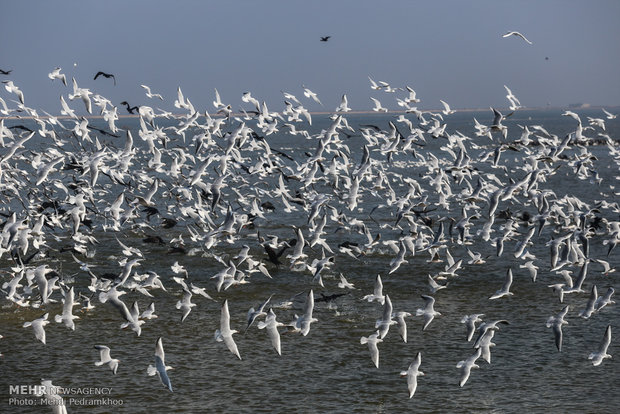According to Adel Mola, Hour al-Azim is now witnessing an increasing number of various species, including big flocks of flamingos, every day, thanks to the compensatory measures that have prevented the water-shocked wetland to be fully depleted.
He noted that the direction of water into the wetland from Karkheh River in the past month and at the end of agriculture season in the region have eased the poor condition of the vast area. The excessive withdrawal of water from Karkheh River and a rise in evaporation in midsummer had given the wetland a water shock.
The official expressed hope that appropriate measures by the Department of Environment and the Oil Ministry would help the major wetland return to its good days.
Hour-al-Azim, located in the southwestern province of Khuzestan, is an important wetland on the border of Iran and Iraq, which dried up and turned to a major sand and dust storm hotspot due to oil sector projects and not being granted its water right.
Migratory birds normally wing their ways to the wetland as temperatures drastically drop in their main habitat in Siberia, Russia and northern Europe. Migratory birds on their way land in some other wetlands to rest and then arrive at their destination in Hour al-Azim or Shadegan wetland to spend the whole winter, and leave the country before the spring migrating to North Africa.
Some special bird species exclusively migrate to the Hour al-Azim wetland, including lesser white-fronted goose, ferruginous duck and darters or snakebirds.
MNA/IRN83578306


























Your Comment